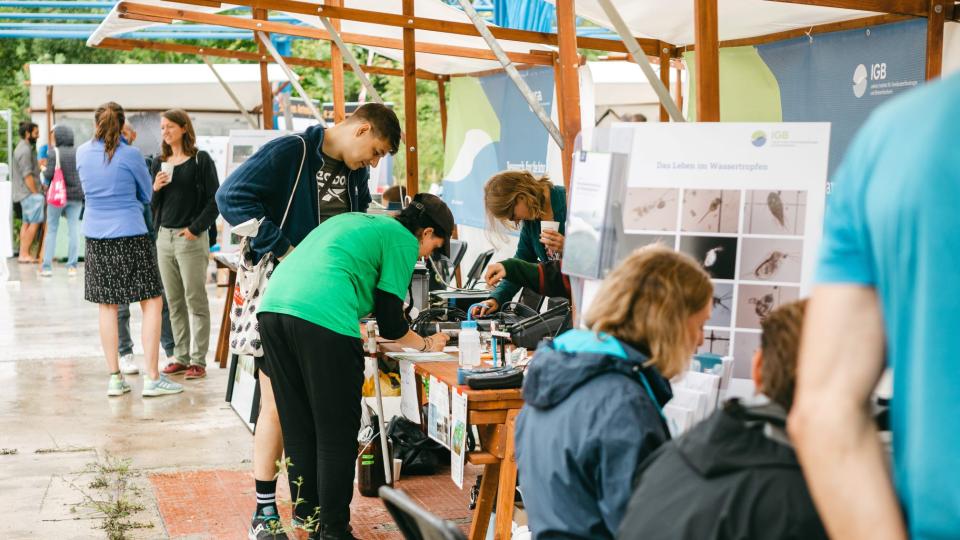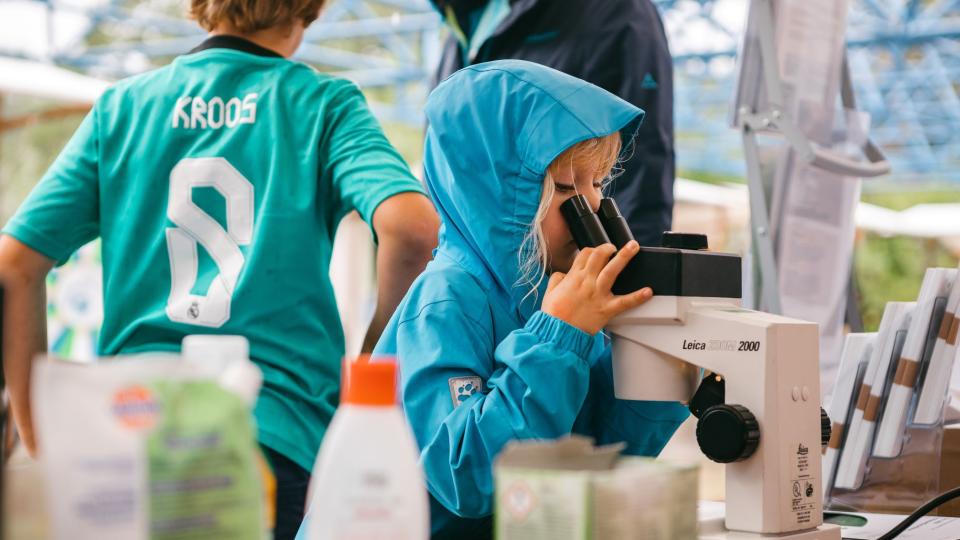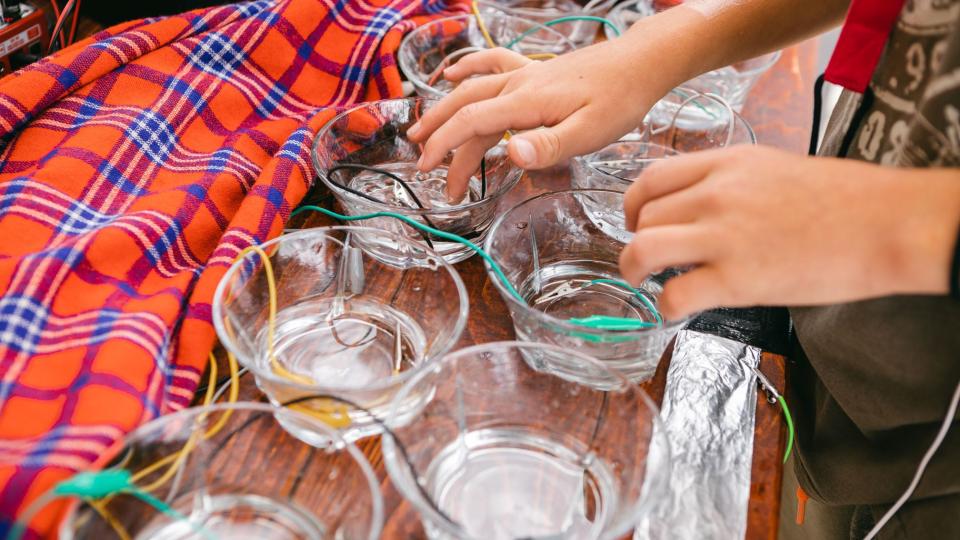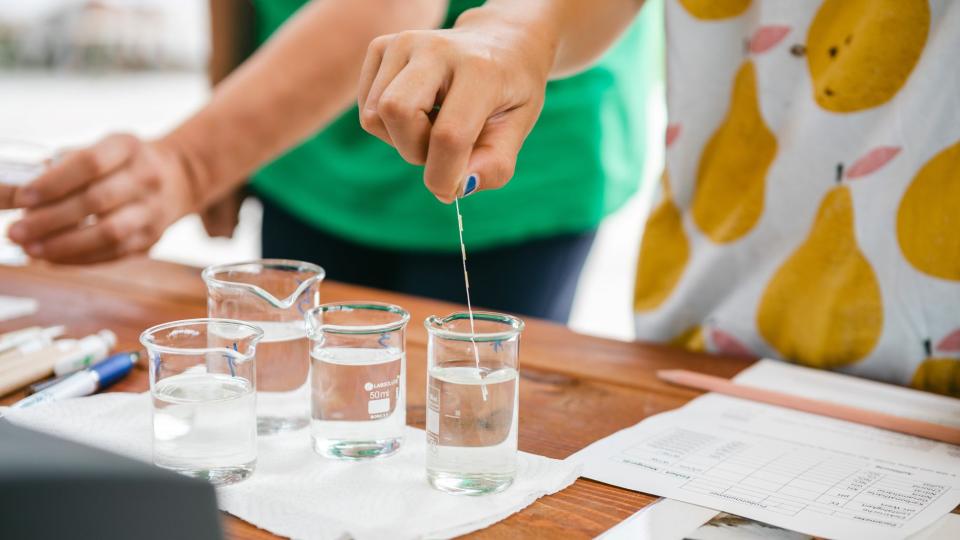Visitors can explore the world of freshwater in a vivid marketplace in the Institute's garden: from the different animals, plants and microorganisms that live in our rivers and lakes, to the sustainability of aquaculture products and the importance of the smallest freshwater habitats close to home. There will also be the opportunity to visit our fish facilities and see the great arapaima and sturgeon up close.
Young and old builders alike can test how rivers shape the landscape and how flow rates affect groundwater levels. If you like, you can take a water sample from Lake Müggelsee and discover the world of microorganisms under the microscope.
Short presentations, e.g. on training opportunities at the Institute, as well as games, activities and a tombola will make the day an experience for the whole family.
The Treptow-Köpenick Coordination Office for Nature and Environmental Education will also be present to provide information about green and blue educational opportunities in the district.
Programme of presentations
- The threat to water infrastructure in Ukraine (11:30 and 14:00)
- Light pollution: tracking down nocturnal insect mortality (12:00 and 14:30)
- What water do we drink (12:30 and 16:00)
- A short history of River Spree (13:00 and 15:00)
- Training opportunities and FÖJ at IGB (13:30)
Stations and activities
Water in the landscape
A bed of loops and meanders, that's how water makes its way through the landscape - if it's allowed to. But what happens when rivers are regulated or dams built? A model shows how our rivers flow and how human activity affects them.
Research on the Tagliamento River
IGB runs a field research station on one of the last free-flowing Alpine rivers, the Tagliamento. But what does a natural river look like and how does it differ from highly regulated water bodies?
The Oder River: small algae, big disaster
In the summer of 2022, the Oder suffered a dramatic mass die-off of fish, mussels and snails. Triggered by high salinity, high water temperatures and low flows, a toxin-producing brackish water alga called Prymnesium parvum had spread en masse. We show what this little organism is all about and why it feels comfortable in the Oder.
Life in a drop of water
Whether algae or water fleas, microorganisms can be observed live under the microscope. Together we look at samples from Lake Müggelsee and the River Oder.
Water plants in Müggelsee
Too much vergetation in the lake? Underwater plants are an important part of our freshwater ecosystems. They provide a habitat for many different animal species. They also store carbon, phosphorus and nitrogen. But what exactly is growing in the lake? And what can be done when recreational activities are affected?
Monitoring the lake with probes and samples
How do researchers monitor Lake Müggelsee? Our technicians show which instruments are used. Anyone who wants to can take a sample from the lake and look at it under the microscope.
Small bodies of water
Small but important: What lives in ponds and pools and what services do these small ecosystems provide to nature and to us humans? Scientists at IGB are currently investigating this using the example of ponds in Schöneiche.
Urban water bodies
Sheet pile walls along waterways not only look boring, they also provide no habitat for animals and plants. But if they are equipped with plant boxes, stepping stone habitats can be created.
Aquaculture
Many people enjoy eating fish and other seafood. Worldwide, more than half of this "blue food" comes from aquaculture. But how does it work? Take a look and learn more about the background, species and various issues of aquaculture.
Giant memory: Who lives in the world's rivers and lakes?
Do you have what it takes to be a freshwater expert? Find pairs of different river and lake creatures and discover their special characteristics.
Fishing game
What fish actually live in our waters? Grab a fishing rod and catch lots of different fish! Whoever knows them all gets a fishing diploma.

A hive of activity: Researchers and staff of IGB inform about their work at booths. | Photo: Konstantin Börner

Tracking down tiny creatures: whether algae or water fleas - the world looks very different under the microscope. | Photo: Konstantin Börner

Making music with water? The Treptow-Köpenick Coordination Centre for Environmental Education shows how it's done. | Photo: Konstantin Börner
Learning about fish species in a playful way: in the fishing game, even the smallest ones get to hook a fish. | Photo: David Ausserhofer/IGB

Analyse water samples: Visitors can use conductivity electrodes and rapid tests to analyse various water samples and find out which sample comes from which body of water. | Photo: Konstantin Börner
Water in the landscape: Here you can try out how groundwater and surface water interact. | Photo: David Ausserhofer/IGB
Close to the giants: Large arapaima, native to the Amazon and its tributaries, swim in the tanks at IGB. | Photo: David Ausserhofer/IGB



